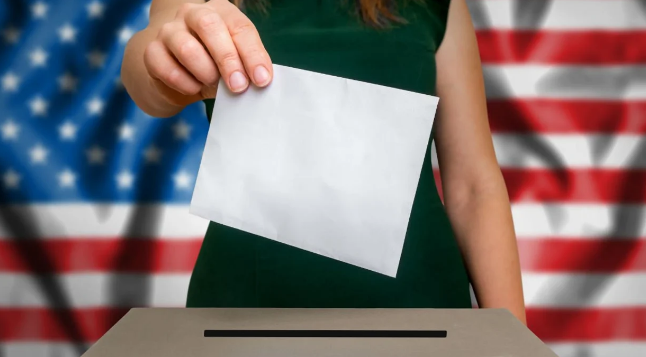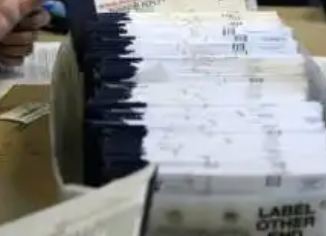
One in five voters who cast mail-in ballots during the 2020 presidential election admit to participating in at least one kind of voter fraud, according to a new poll conducted by Rasmussen Reports and the Heartland Institute.
Specifically, 21% of mail-in voters admitted they filled out a ballot for a friend or family member; 19% of mail-in voters admitted that a friend or family member filled out a ballot on their behalf; 17% of mail-in voters admitted they voted in a state where they were no longer a permanent resident; and 17% of mail-in voters said they signed a ballot for a friend or family member with or without his or her permission.
Each of these instances constitutes voter fraud.
Taking only the first instance, this means that 21% of all mail-in ballots were fraudulent in 2020. It is important to note this number was likely much higher because the survey questions were not mutually exclusive.
The national poll of 1,085 likely voters was conducted between November 30 and December 6, with a margin of error of +/-3 percentage points and a 95% level of confidence.
{snip}
Using only the most conservative estimate (21%), the number of fraudulent ballots is still astronomical. According to election data, 43% of 2020 voters cast ballots by mail — by far the largest percentage in U.S. history. Twenty-one percent of that 43% mail-in figure yields approximately 9%.
According to the Cook Political Report, 158,397,726 votes were cast for Joe Biden, Donald Trump, or another candidate in 2020. Taking 9% of this total, that means more than 14 million ballots cast in 2020 were fraudulent. Again, this is just the most conservative estimate — the total number of fraudulent ballots was likely much higher.
Moreover, the survey reveals that fraudulent voting may not have been purely limited to mail-in ballots. Eight percent of all survey respondents — not only those who cast mail-in ballots — admitted that a friend, family member, or organization (such as a political party) offered to pay or reward them for voting.
The survey indicates that the percentages of voter fraud among Republicans, Democrats, and unaligned voters were largely similar. It is vital to note, however, that this does not mean these fraudulent ballots simply canceled each other out.
While the percentages were similar, the overall numbers were not. According to the survey, 38% of Biden voters submitted mail-in ballots, compared to only 23% of Trump voters. As such, Biden received a much larger overall share of likely fraudulent ballots.
{snip}
In 2020, several states also allowed ballot harvesting, which allows third-party individuals to collect and submit mail-in ballots on behalf of voters, although evidence shows ballot harvesting is “ripe for voter fraud and abuse.”
All of this occurred despite the fact that the Constitution explicitly designates that only state legislatures have the power to make or change election laws. Under Article I, Section 4, “The Times, Places and Manner of holding Elections for Senators and Representatives, shall be prescribed in each State by the Legislature thereof.”
There are many reasons why mail-in voting is less reliable than in-person voting.
For starters, state voter rolls are notoriously inaccurate. In 2012, the Pew Center on the States analyzed state voter registration rolls and found that “approximately 24 million — one of every eight — voter registrations in the United States are no longer valid or are significantly inaccurate. More than 1.8 million deceased individuals are listed as voters. Approximately 2.75 million people have registrations in more than one state.”
Mail-in ballots are also rejected at an astounding rate.
In New York, which used mail-in ballots during its primary elections in 2020, 21% of ballots were rejected due to errors. In Pennsylvania, the same scenario played out with more than 20% of mail-in ballots rejected due to voter errors.
Even NPR raised concerns about mass mail-in voting in the months before the 2020 general election.
{snip}
In 2012, the New York Times ran an article headlined, “Error and Fraud at Issue as Absentee Voting Rises,” which similarly concluded that “votes cast by mail are less likely to be counted, more likely to be compromised and more likely to be contested than those cast in a voting booth.”
Despite all of these concerns, only 0.80% of all absentee and mail-in ballots were rejected in 2020, according to Ballotpedia. Clearly, nearly all fraudulent ballots made it through our country’s gaping sieve of an electoral system.
Though some people need to vote by mail, the practice should be the exception, not the rule. Considering most states offer early voting — allowing voters to cast ballots in-person weeks before Election Day — there is little excuse for voters who do not show up to a physical polling location. Plus, as this poll indicates, only 2% of voters would choose not to vote if their state banned mail-in voting.
With the 2024 general election less than one year away, it is vital that state officials do everything in their power to shore up the integrity of their states’ voting systems and ensure that voting procedures are as dependable and accurate as possible. Our republic cannot survive in the absence of strong electoral laws that prevent widespread fraud.
* Original Article:
https://www.theblaze.com/columns/opinion/new-poll-finds-rampant-mail-in-voting-fraud-in-the-2020-election


